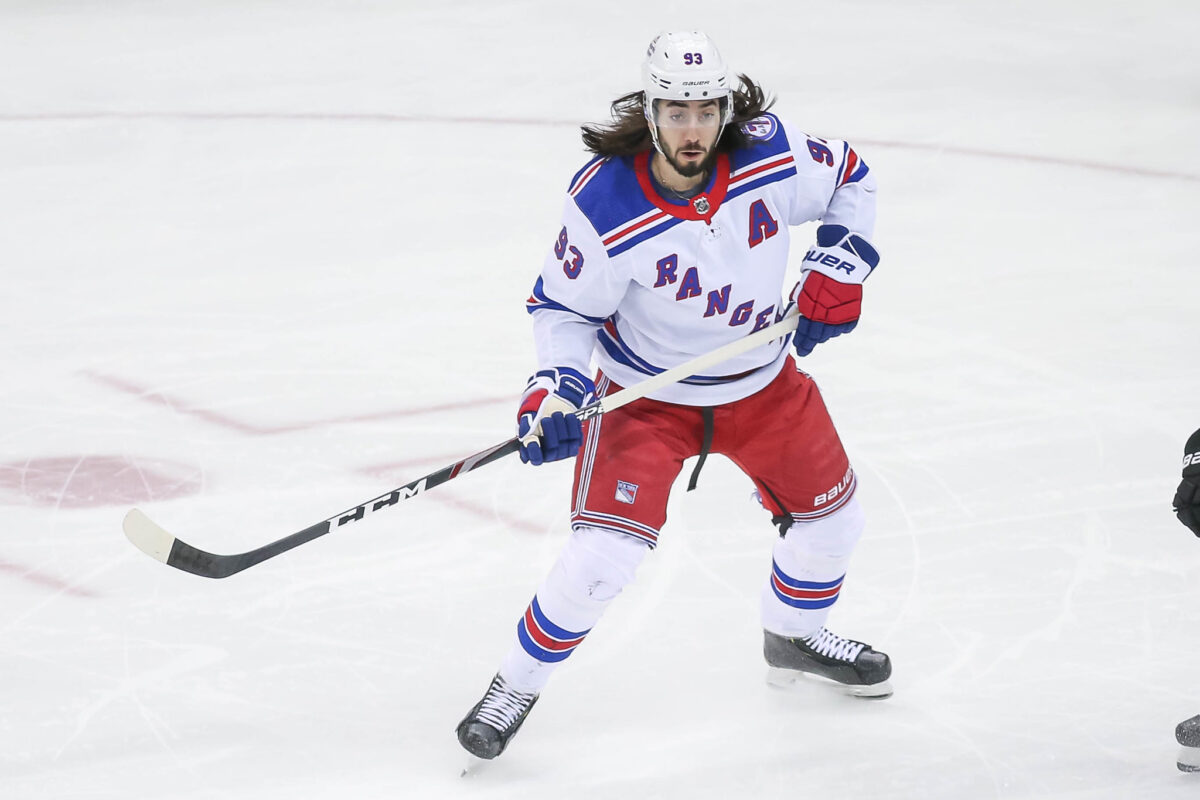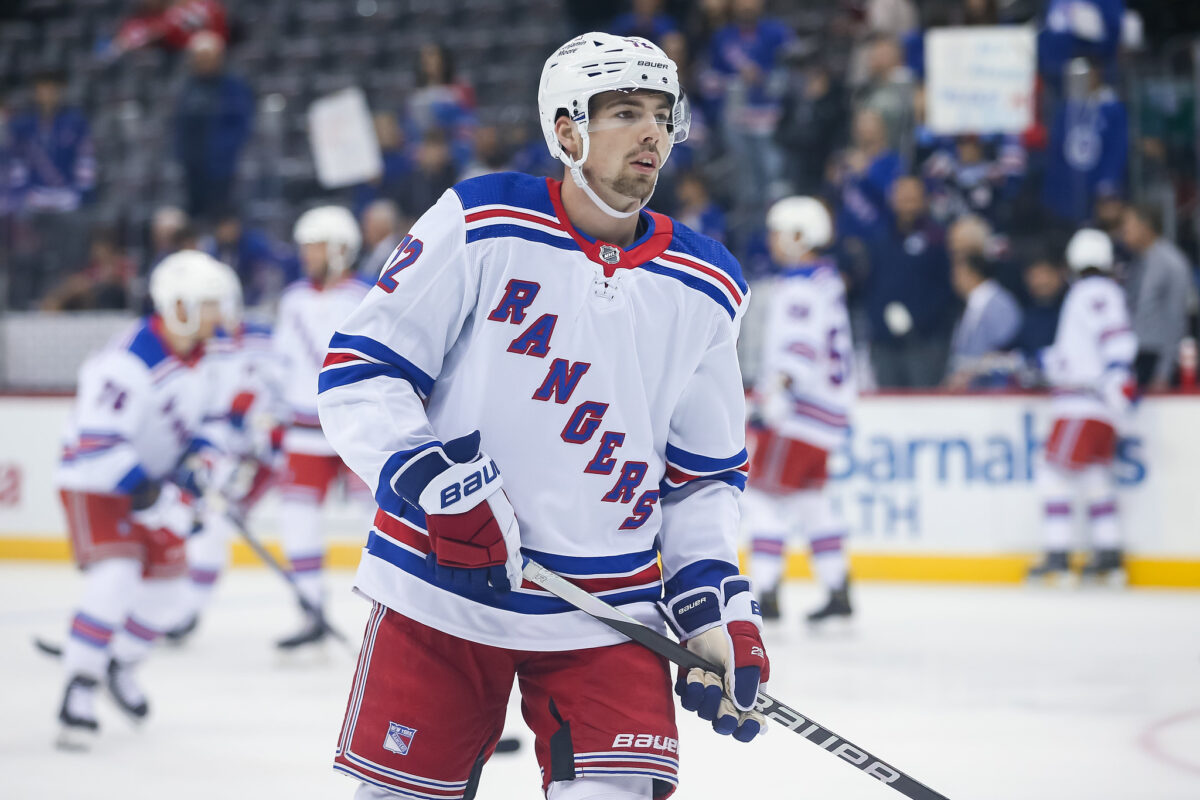It’s no secret the New York Rangers are in win-now mode. Since making a somewhat surprisingly successful playoff run in 2022, the team has been subject to pressure and expectations. They entered the 2022-23 season as legitimate contenders, something that hadn’t happened since the Rangers organization published what fans call “The Letter,” an explicit declaration committing the team to an aggressive rebuild.
The Rangers went all-in at the 2023 Trade Deadline, acquiring Vladimir Tarasenko and Patrick Kane, among other depth pieces, indicating general manager (GM) Chris Drury thinks short-term success is more important than holding onto future assets. This behavior indicates that there is a sense of urgency within the organization to capitalize on the current core. With a mix of veteran talent, young contributors whose salaries don’t break the bank, and an elite goaltender, Drury is wise to think that this group might be the best shot the Rangers have at a championship in the foreseeable future, and likely the best shot he has during his tenure.
At the core of these discussions is one issue: the Rangers’ championship window. They won’t be good forever; obviously, as players age, regress, or become too expensive to afford. Yet, they do still have exciting times ahead of them, so it’s worth looking closer into how much longer it really is.
Racing Against the Clock
The Rangers’ offense relies heavily on the trio of Artemi Panarin, Mika Zibanejad, and Chris Kreider. They combined for 104 goals in the 2022-23 regular season, making up for just under half of the entire team’s offense. Their impact is even more pronounced on the power play, where the three of them scored over 60 percent of the team’s power play goals.

Each of these three are not only playing well recently compared to their teammates; they’re playing well compared to their own performances in previous years. Zibanejad hit a career-high in points this season with 91. Panarin fell just four points short of his 2019-20 career high of 96 points. Kreider followed up last season’s 50-goal performance by scoring a still impressive 36 goals this season. It doesn’t seem like any of these three are slowing down, but it is worth considering that all three are in their 30s now, so the Rangers have to know that they cannot keep up this pace forever.
The Rangers can probably only rely on the trio to carry the team for another five years, and that’s assuming the Rangers don’t part ways with Panarin and Kreider in free agency when their contracts end after the 2026-27 and 2027-28 seasons, respectively.
Navigating a Cap Crunch
In the last few years, the Rangers have been able to afford high-end players because much of their roster has consisted of players still on their entry-level contracts or on short-term, relatively inexpensive bridge contracts. Players like Alexis Lafreinère, Kaapo Kakko, Filip Chytil, K’Andre Miller, and Braden Schneider have all been incredibly affordable since they started playing consistently. Even though some of them, mainly the forwards, haven’t performed up to expectations, they still have outperformed their salaries.

As these low-cost contracts expire, the Rangers are going to have to make some tough decisions because they just don’t have the salary cap space to afford larger contracts for these young players in addition to longer-tenured players.
Lafrenière and Miller are both restricted free agents (RFAs) this summer, and Kakko, Schneider, and Ryan Lindgren are RFAs next summer. This puts the Rangers into a bit of a catch-22, where they want all of their younger players to keep improving, but they still want to be able to afford to keep them.
Related: Rangers Kakko Deserves a Bigger Role Next Season
While the NHL has not yet announced what the exact salary cap ceiling will be in the future, it’s not unreasonable to think that the Rangers could only afford their current roster for another two seasons, and that’s assuming they don’t re-sign any of this year’s trade deadline acquisitions like Patrick Kane.
A Realistic Window
It’s hard to say just how long the Rangers can be competitive. Realistically, the roster as it stands now probably has another two to five years to make a run for the Stanley Cup. That’s not to say they won’t be able to compete for a championship beyond that, as any team playing in front of Igor Shesterkin has a chance to be competitive. However, a Rangers roster that’s competing for a championship more than five years from now will look very different from the one we see today.
